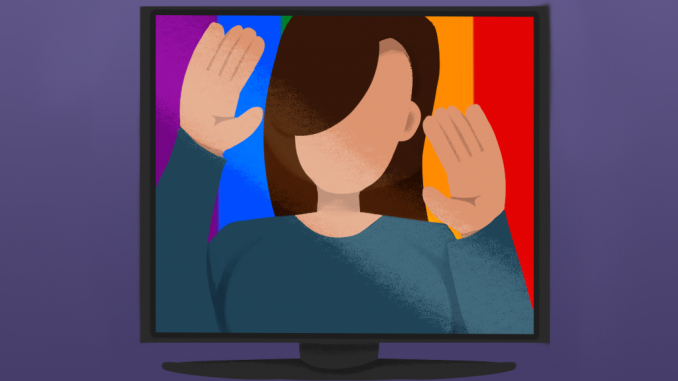
Adrienne Shaw, a media studies and production professor, created Temple’s first course about LGBTQ representation in the media in Spring 2014.
“LGBT Representations in Popular Media” focuses on how the LGBTQ community has been portrayed in film, television, marketing and other forms of media from the 1960s to today. Throughout the semester, students discuss the connections between gender, race, class and LGBTQ representation.
Shaw developed the course during her time as a doctoral candidate at the University of Pennsylvania before she came to Temple in 2012.
“It was a class that wasn’t currently on the books [at Temple], and it felt like an absence in our curriculum,” Shaw said.
Shaw estimated that approximately half of her students are in the LGBTQ community, with the remainder having friends and family who identify as queer.
A majority of LGBTQ-centered courses are offered in the LGBT minor program, but Shaw’s course is a part of the Media Studies and Production program.
From 2017-2018, 6.4 percent of primetime characters were in the LGBTQ community, making it an all-time high, according to an annual report on LGBTQ inclusion by GLAAD, an LGBTQ media monitoring organization.
Gabbi Tapper, a sophomore psychology major who identifies as bisexual, said seeing queer representation in the media from a young age was “crucial because there are so many people who aren’t accepting of it.”
Layah Taylor, a sophomore English major, said the majority of people in her LGBT minor classes are queer.
“It’s really beautiful to witness so many LGBTQ people in a room who are actively searching to reclaim their identities through academia,” she said.
Taylor believes her lack of straight classmates represents a disinterest in LGBT culture and history.
“That says a lot about straight people or really privileged people in general not wanting to learn about systems that don’t directly affect them or even history that they perceive to not directly affect them,” Taylor said.
Taylor said she has noticed a trend in movies where LGBTQ characters are only written around their suffering.
“There are struggles that come along with being queer and there are struggles that come along with having different intersections of your identity, but I also think we can’t focus on that,” Taylor said.
Showing only one side of the queer experience can be detrimental and emphasized the need to show a wide portrayal of LGBTQ characters in film and television, Taylor said.
“Yes, on one hand, we do have queer people who are very oppressed, but then you also have to look at the other side of the spectrum where we have queer people who just live their lives and go about their normal days,” Taylor added.
Media can also reinforce homophobic or transphobic stereotypes, Tapper said.
Stereotypes, like gay men presented as feminine and flamboyant, are one-dimensional and do not reflect the whole community, but problematic queer representation is better than complete queer erasure in media, Shaw added.
A common criticism of mainstream queer cinema is that it has a tendency to focus on specifically white gay men, Shaw said.
“Historically, gay white cisgender men tend to be represented because those are who media industries assume have the most money,” Shaw said.
In 2017, 64 percent of queer films were about gay men and 57 percent of LGBTQ characters were people of color, a sharp increase from previous years, GLAAD reported.
When making LGBTQ media, Taylor hopes people make an effort to portray the community accurately.
“[They should] take their time to do their research about history, queer people, and learn about the stereotypes and how they affect our community,” Taylor said.



Be the first to comment